Are Your Peonies Ready for Winter? Don't Forget These 3 Fall Jobs for Gorgeous Blooms Next Year
Make sure your peonies are primed for the most voluptuous and vibrant blooms next year! Effective peony winter care starts now – with these 3 core fall tasks for the ultimate blooms
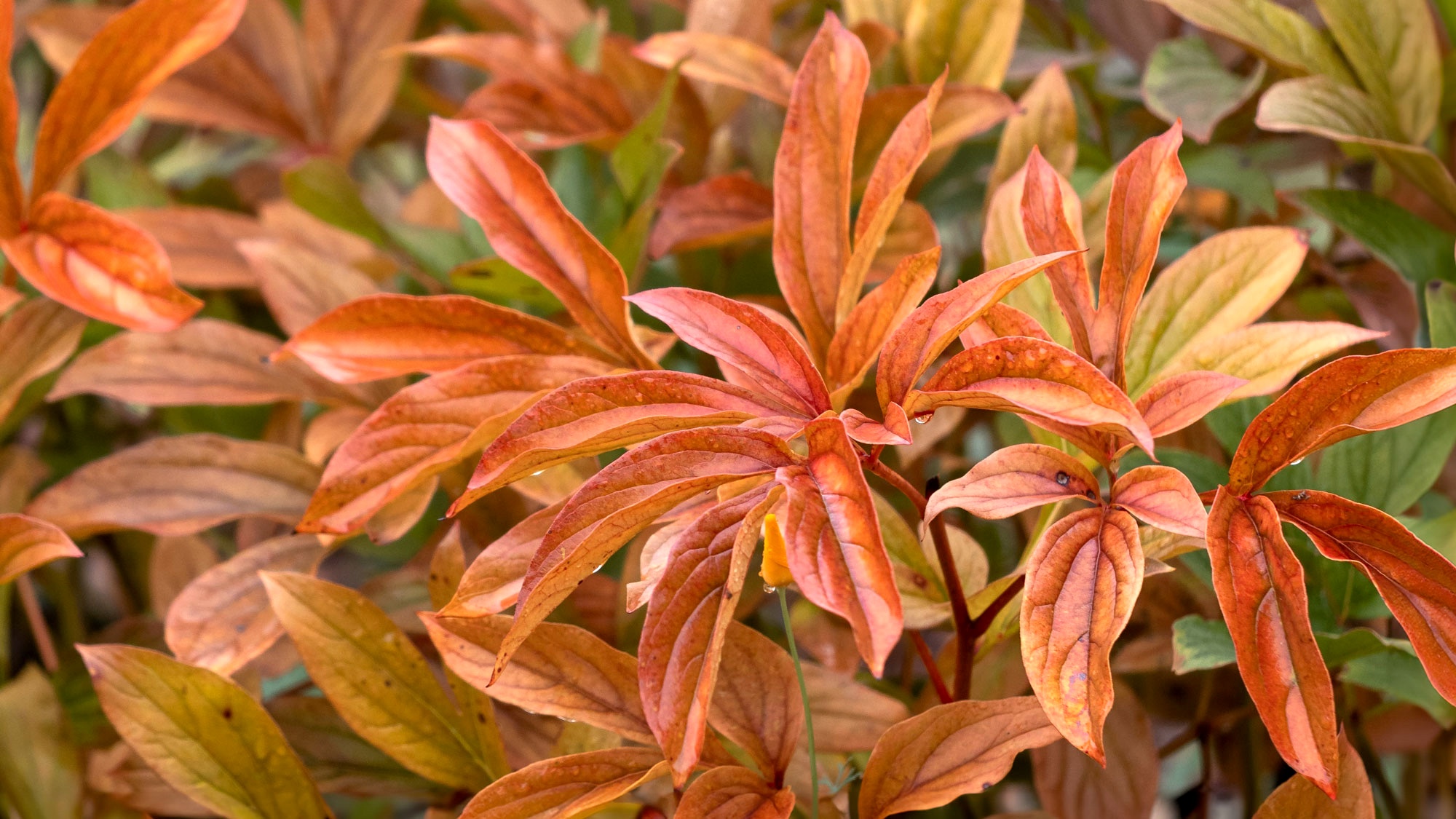

Amy Draiss
For most of the year, the process of growing peonies feels like it’s about preparation and expectation – in the hopes that come the all-too-brief flowering season, you’ll be rewarded with voluminous, fragrant blooms. At this time of year, you’ll have been staring at flower-free peony shrubs for many months. As the foliage shifts color and starts to die back in readiness for winter, the prospect of heavy, lush flowers may seem further away than ever. But that doesn’t mean you can’t take steps now to make them a beautiful reality – you absolutely should. Doing so will ensure the best peony winter care during dormancy, and mean that with the new growing season, your next peony display is suitably divine and extravagant.
Getting peonies ready for winter comes down to a few simple, yet highly effective steps – targeting plant health, protection and stronger growth potential. Doing these essential peony care jobs now gives plants chance to recover, rest and regenerate through the colder months to come. Make sure you can enjoy your peonies to their fullest expression next spring – by making time now for these simple tasks before winter sets in and plants become fully dormant. Do it right, and you’ll reduce the risk of potential peony threats such as overcrowding and disease. Here’s how to improve plant health ahead of winter, and increase bloom size and vibrancy with these simple fall jobs – to set you up for a spectacular display next year.
3 Ways to Get Your Peonies Ready for Winter
The period between fall and winter – as peonies approach and enter dormancy – is the perfect time to tend to specific tasks to boost future flowering. Doing these tasks now helps peonies in winter as well as ahead of spring. Follow these jobs, and you’ll prevent diseases like botrytis, protect the plant roots, and encourage stronger growth once spring arrives. These 3 tasks are your roadmap for knowing how to winterize peonies in the best way possible.
Your winter prep will depend on a unique combination of USDA growing zone and soil conditions, as well as peony type and age. Since peonies thrive in USDA zones 2-8, they are relatively cold hardy. Indeed, they rely on significant chill hours for continued health and vitality. These 3 simple tasks are suitable for the full range of suitable growing zones. However, it’s a good idea to check your soil moisture and pH levels before completing these jobs. Ideally, you need the soil pH to be 6.5-7. A meter like the Raintrip 4-In-1 Soil Meter from Amazon can help you determine conditions under ground in tandem with these other essential peony checks.
Knowing how to prepare peonies for winter will also depend on the age of your peony. The needs of established plants are different to those of young peonies. Plants that are less than a couple of years old require a gentler touch. Certain activities that support, protect and rejuvenate established plants can cause stress in younger peonies. You also need to adapt these tasks slightly, depending on the type of peony you grow. Herbaceous, Itoh (intersectional) and tree peonies all require different approaches to cutting back, for instance. Where relevant, these needs are outlined below. Whatever type you grow, these simple fall jobs will give you the advantage ahead of winter and the new growing year.
1. Cut Back Spent Peony Foliage
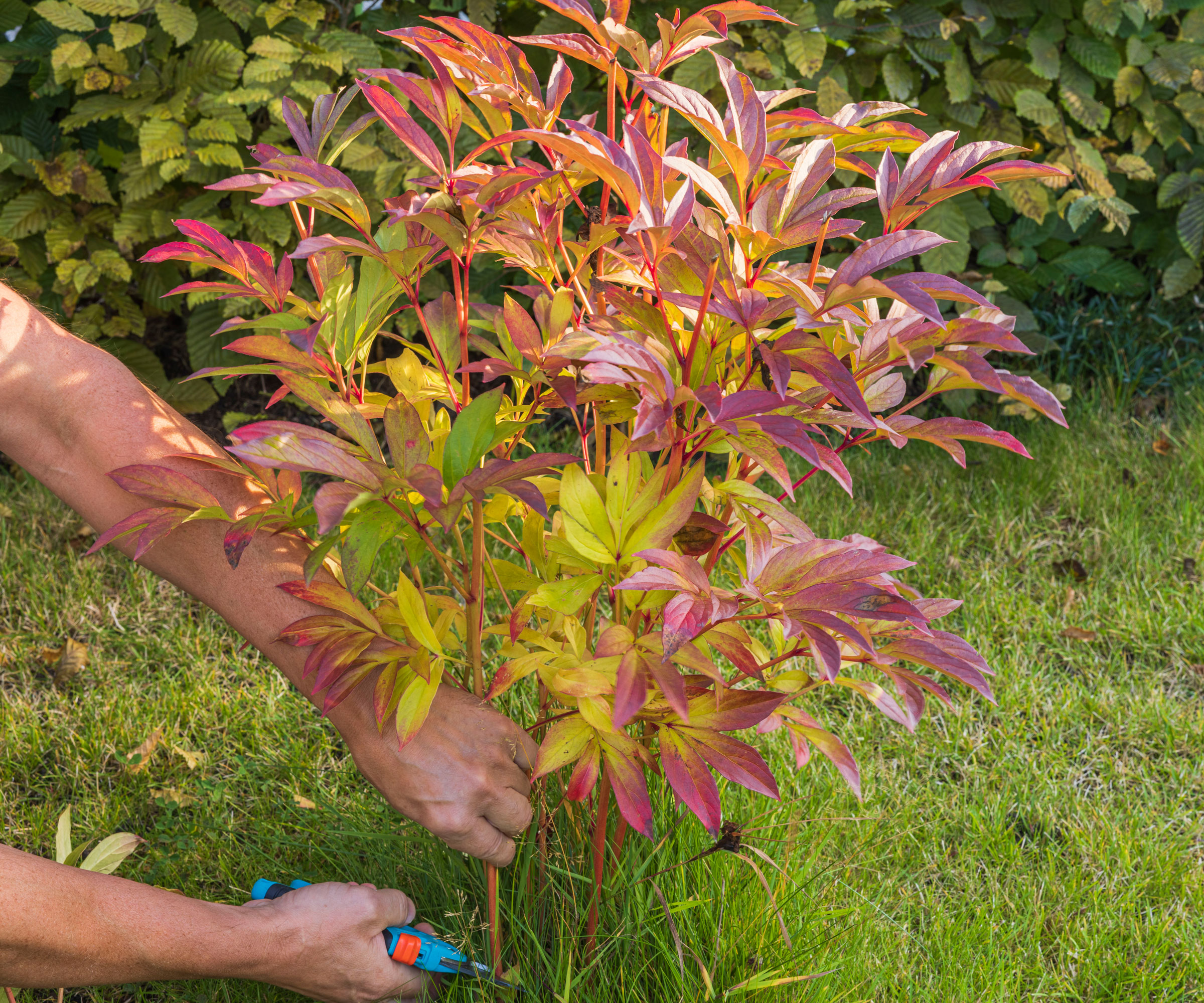
Cutting back spent peony foliage is a vital task ahead of winter. It’s definitely wise to cut back herbaceous peonies in the fall, preferably immediately after the first fall frost. Doing so reduces the risks of overwintering fungal spores and other peony diseases that could be lurking in decaying foliage, such as powdery mildew and botrytis blight. Peony pruning in fall also nudges the plant towards redirecting its energy into the roots ahead of the new growing year. Knowing when to cut back peonies may seem confusing at first, but quite often they will let you know when they are ready. After the first frost, you will probably notice the foliage turning black. This is your cue to grab your sharpest shears and secateurs.
For herbaceous peonies that are well established (3 years and older), you can cut stems to ground level, around an inch (3cm) above the soil surface. Focus on excising all dead or diseased-looking plant matter, specifically any yellow, black, soft and soggy foliage. For really young peonies (1-2 years old), you can still cut back, but do so gently as stems are still developing. For Itoh or intersectional peonies (hybrids of tree and herbaceous peonies), you need to cut back stems to the point just above their woody base, around 6 inches (15cm) above the ground. However, if your plant is a tree peony, do not cut back hard. Remove dead or damaged stems only, and do this later (in late winter or early spring).
Sign up for the Gardening Know How newsletter today and receive a free copy of our e-book "How to Grow Delicious Tomatoes".
In terms of the best cuts, opt for bypass secateurs or garden shears. Bypass blades are excellent for making clean cuts that cause the least amount of damage to the plant (and consequently also reducing the risk of plant disease). It’s worth investing in something that will last and work reliably and with precision, plus something that will feel comfortable when making mass cuts. The highly rated Fiskars P921 X-Series PowerGear Bypass Pruners, available from Amazon, have a lovely rolling handle and work well for small hands. I also really like the Corona BP 3180D Classic Bypass Pruner, also from Amazon, with its comfy grip and easy action.
When cutting back peonies in the fall, make sure your blades are as sharp and clean as possible. Always clean your shears and secateurs both during and after use with a mild disinfectant. You can pick up Pharma-C 70% Isopropyl Alcohol Wipes from Amazon. My only word of caution with this job is not to cut back your plants too early in fall, as this is a classic peony pruning mistake. You don’t want to make cuts to herbaceous and Itoh peonies while the foliage is still looking relatively healthy, since at this stage it is still feeding the roots. It’s best to wait until the leaves are yellow or blackened by frost before cutting back.
2. Mulch the Peony Root Zone
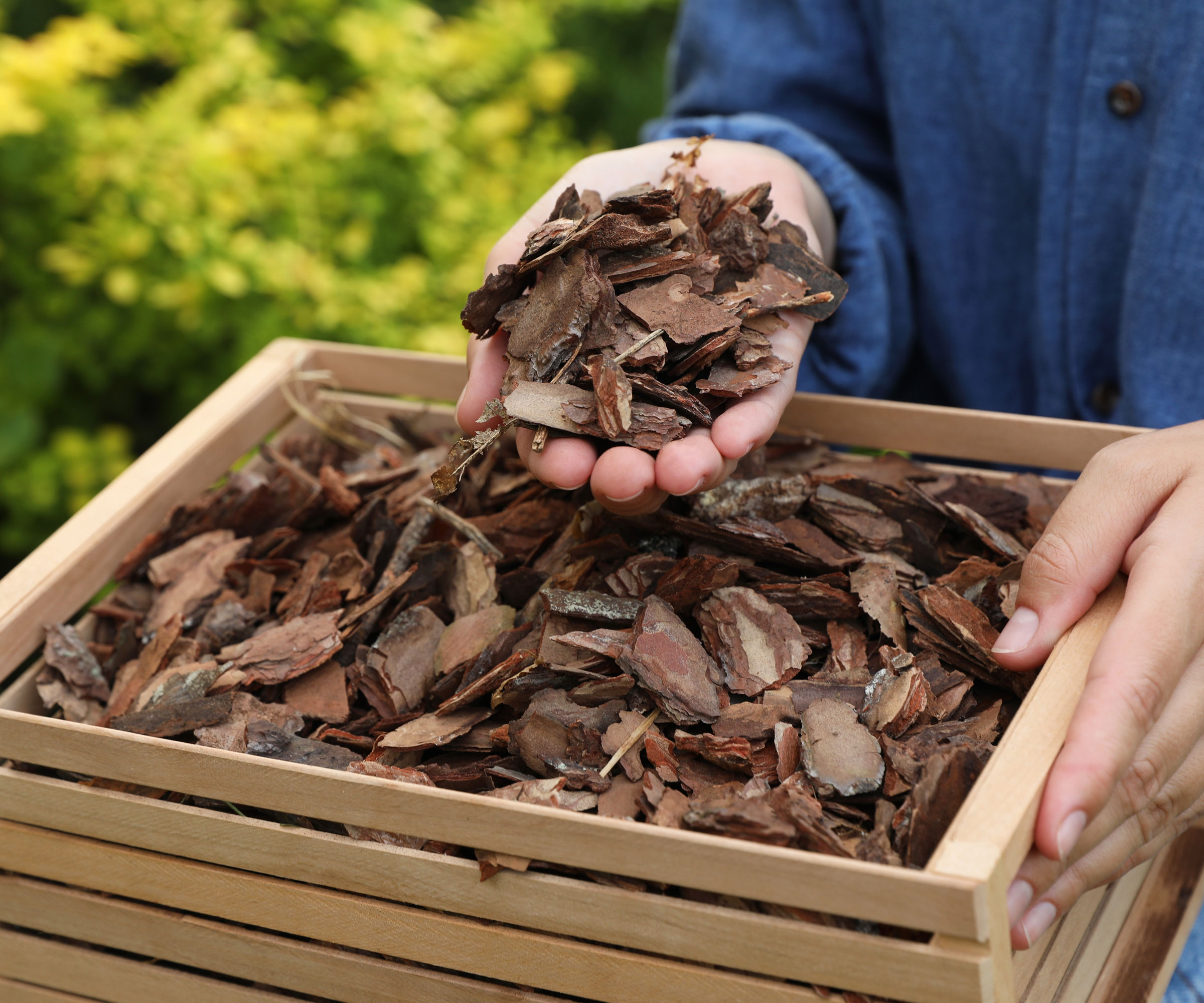
Mulching is the ultimate gift that keeps on giving as fall slowly makes way to winter, and beyond. It is both a luxury and a necessity, helping to insulate and regulate soil temperatures and protect the plant’s roots from the ravages of the freeze-thaw cycle. It also helps in moderating moisture levels, suppressing early spring weeds, freeing up nutrients, nurturing peony root development, and improving the structure of the earth if you opt for organic mulching materials. Little wonder that I’m recommending mulching as one of your essential tasks to get peonies ready for winter.
The trick here is to apply mulch around the base, but not directly on the crown of your peony plant. Smothering mulch on the crowns risks suffocating buds, delaying emerging growth, and potentially causing rots, so keep a 2 inch (5cm) gap around the crown. You also need to steer clear of just piling the mulch on. A little goes a long way, and a thoughtfully thick layer around 2-3 inches (5-8cm) thick is plenty to supercharge your soil and keep plants safe and nourished. Timing your mulching right is also important. Ideally, you need to do this after you cut back the foliage.
Mulching is something that benefits all types and ages of peonies, but again, use a little caution when applying to certain peony types. Mulching is especially beneficial for herbaceous peonies and tree peonies (which have shallow root systems). Again, just keep a gap around the base. Take particular care with Itoh peonies, as their buds develop close to the surface, so apply lightly and loosely for these plants. Where plants are very young, mulching is still beneficial as young roots are more susceptible to frost damage – just watch out for compaction around the crown.
If you can go organic, you’re giving your peony the most potential goodness over the quiet, chilly months of dormancy. Opt for mulches based on shredded bark, straw or well rotted leaf mould. It’s worth selecting something of quality and, if you’re going for bark, regular pieces that allow for good airflow while insulating roots. I love Back to the Roots Organic Premium Mulch, which is free from dyes, and carbon-rich Brut Aspen Mulch, both from Amazon. Avoid heavy mulches that don’t allow for generous airflow. You might also find it helps to loosen the earth before adding your mulch. Use a trowel or hand scoop like the Garden Weasel Heavy Duty Soil Scoop from Amazon, for breaking up clumps and compactions prior to mulching.
3. Divide Overcrowded Peony Clumps
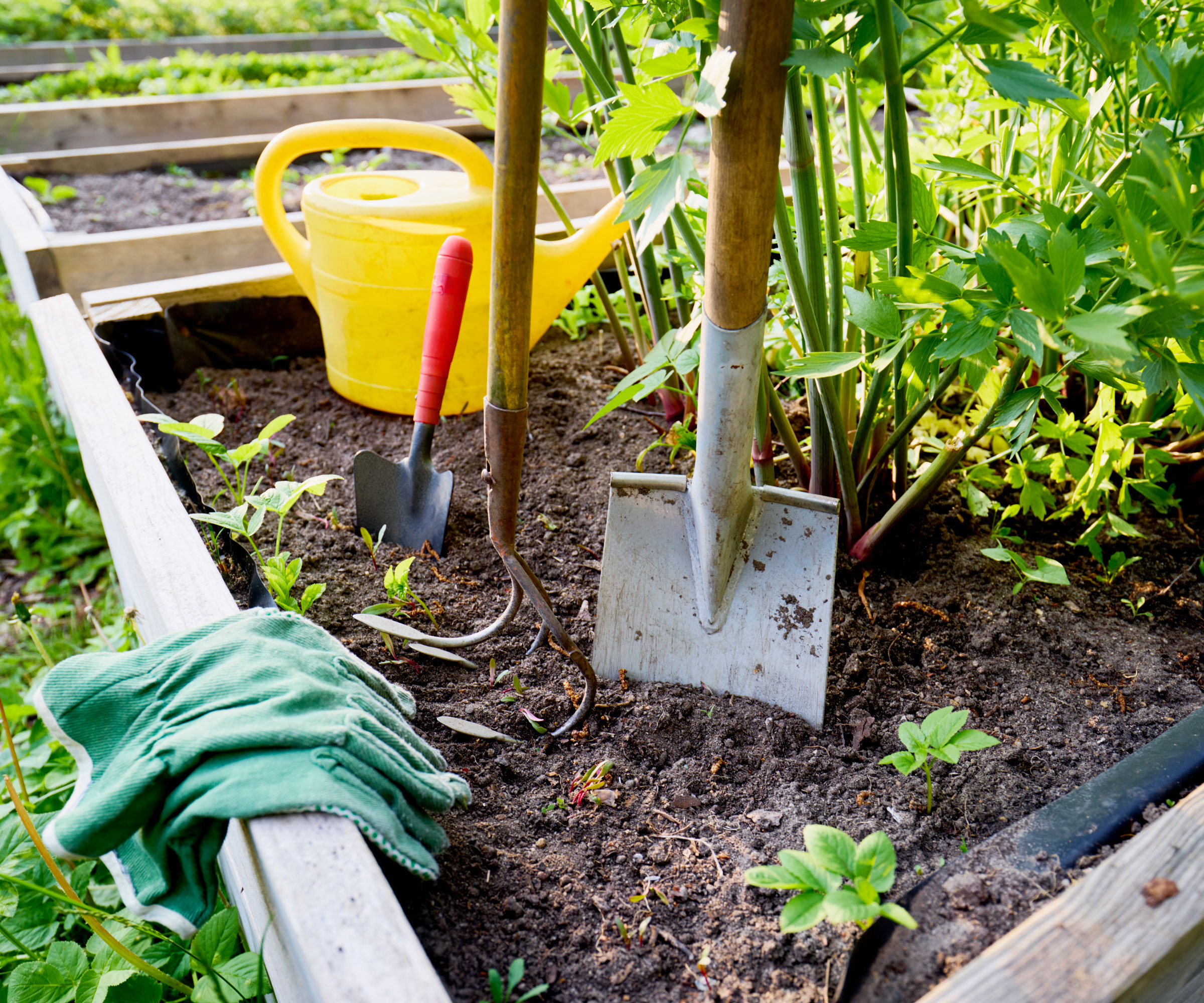
This final fall task is dependent on the overall health and age of your peonies. For plants that have been in the ground for several years, and which you feel have not flowered very well this year, there is a good chance the root clumps may have become congested. You may actually be able to see signs of congestion if the stems are bunched very close together. Where you suspect your peony has become congested, it can help to dig up your plant and divide the peony plant’s root clump.
This may sound a little drastic, but it can be incredibly beneficial to do this in the fall, since root development takes over during the dormant period. Dividing in fall assists with airflow, revitalizes older plants, gives roots more room to grow, and can encourage more voluminous flowering. Established herbaceous peonies are the safest bets for division as the roots are fleshy. You can also divide Itoh peonies, but a little care is needed, and plants should have been in the ground at least five years.
However, there are a few caveats. Peonies are not massive fans of being disturbed, and if you move peonies it can take a little time to re-establish when moved – so division should be something you only do if you suspect that your peony clumps are, indeed, overcrowded and blooming was poor this year. And you should avoid dividing tree peonies and younger plants, which will find the process adversely stressful.
For older peonies that fit the bill, lift the root clump carefully using a garden fork. Divide the crown into regular sections, each containing 3-5 eyes (buds). Use a knife or small pruning saw, like the Corona Razor Tooth Curved Blade Folding Saw from Amazon, to make clean cuts with minimal plant damage. Once you are happy with your divided sections, dip the roots in a little mycorrhizal fungi or inoculant, like Myco Bliss Mycorrhizal Inoculant from Amazon. This will help replanted roots re-establish quicker, assisting in water and nutrient absorption, and reducing plant stress. Replant your divisions immediately and water well, and you’re all set.
Final Thoughts as You Prep for Winter…
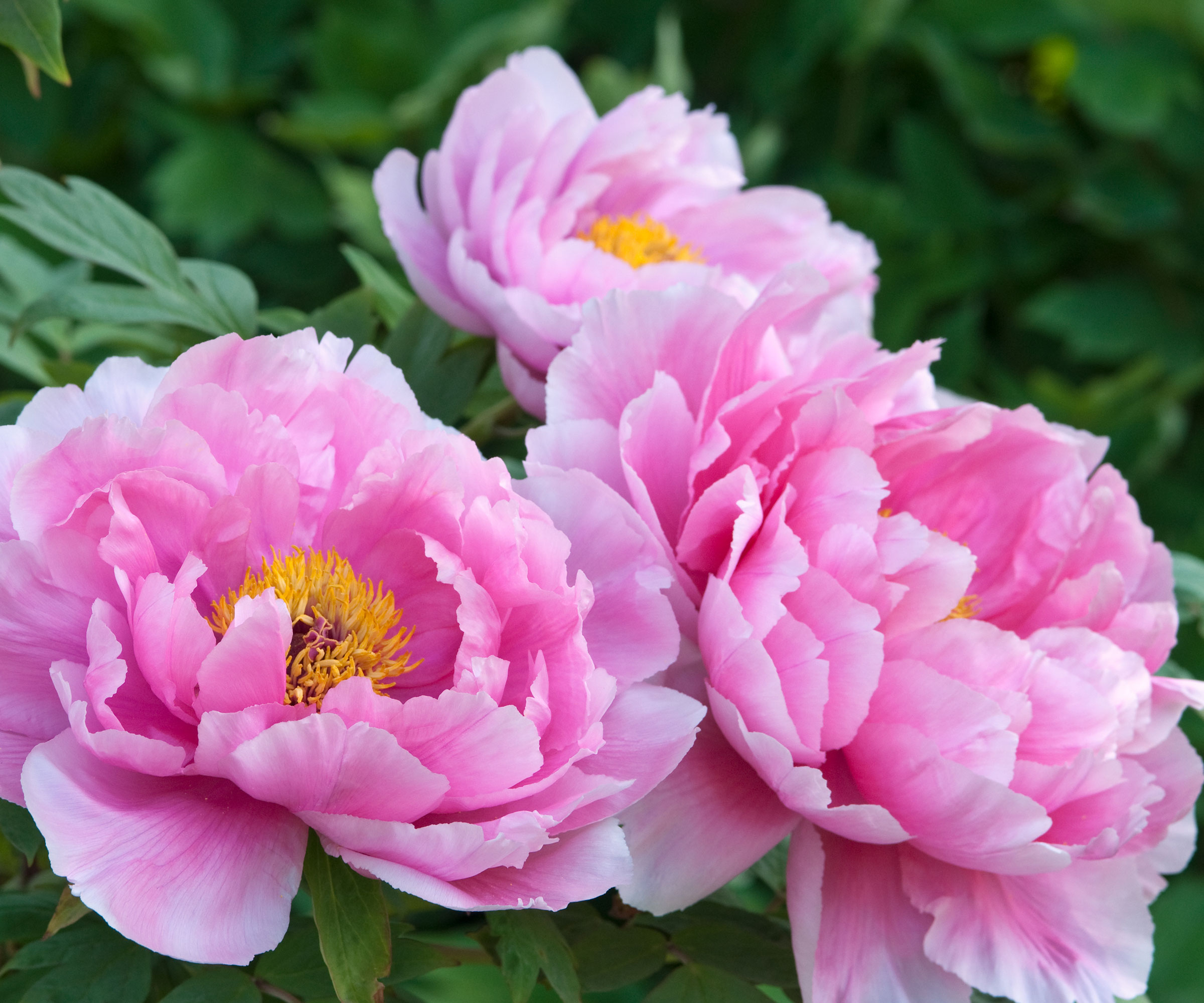
These 3 simple tasks can make all the difference to peony health and eventual flower power. You get the satisfaction of knowing you’ve done absolutely everything you need to do in order to get your peonies ready for winter, so they pass through dormancy and emerge full of vitality as spring begins in earnest. Make a headstart on these jobs now, and caring for peonies next year will be so much easier. Your plants will greet the new year with a clean bill of health, all set to develop quickly and hit their full flowering potential.
Yes, peonies can be low maintenance for much of the year, but you won’t regret carrying out these simple tasks in the fall – before winter starts. By cutting back old foliage, carefully mulching, and dividing older plants, you’ll keep peonies healthy, productive and ready to impress with lush, evocative blooms next year. So make the most of your next crisp fall day – and set the stage for your best peony display yet!
Need more ideas for growing inspiration, timely gardening jobs and seasonal expert advice delivered straight to your inbox? Sign up for the free Gardening Know How Newsletter!

Janey is a former assistant editor of the UK’s oldest gardening magazine, Amateur Gardening, where she worked for five years. For the last few years, she has also been writing and editing content for digital gardening brands GardeningEtc and Homes & Gardens. She’s taken part in a range of conservation and rewilding projects for the Royal Horticultural Society (RHS) and the British Trust for Conservation Volunteers (BTCV) as a way of exploring her horticultural horizons. She is currently undertaking her RHS Level 2 certificate in The Principles of Plant Growth and Development.
- Amy DraissDigital Community Manager